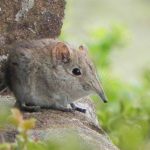 Mysteries
Mysteries  Mysteries
Mysteries  History
History 10 Surprising Stories About the Texas Rangers
 Humans
Humans 10 Philosophers Who Were Driven Mad by Their Own Theories
 Miscellaneous
Miscellaneous 10 Video-Game-Worthy Weapons and Armors from History
 Weird Stuff
Weird Stuff 10 Psychics Who Accurately Predicted Wartime Events
 The Arts
The Arts 10 Pieces of Art Inspired by a Broken Heart
 Health
Health 10 Science Fiction-Sounding New Medical Treatments
 History
History 10 Surprising Facts About the Father of Submarine Warfare
 Space
Space Ten Astonishing New Insights into Alien Worlds
 Weird Stuff
Weird Stuff 10 Bizarre Summer Solstice Rituals Still Practiced Today
 Mysteries
Mysteries Top 10 Haunting Facts About the Ghost Ship MV Alta
 History
History 10 Surprising Stories About the Texas Rangers
 Humans
Humans 10 Philosophers Who Were Driven Mad by Their Own Theories
Who's Behind Listverse?

Jamie Frater
Head Editor
Jamie founded Listverse due to an insatiable desire to share fascinating, obscure, and bizarre facts. He has been a guest speaker on numerous national radio and television stations and is a five time published author.
More About Us Miscellaneous
Miscellaneous 10 Video-Game-Worthy Weapons and Armors from History
 Weird Stuff
Weird Stuff 10 Psychics Who Accurately Predicted Wartime Events
 The Arts
The Arts 10 Pieces of Art Inspired by a Broken Heart
 Health
Health 10 Science Fiction-Sounding New Medical Treatments
 History
History 10 Surprising Facts About the Father of Submarine Warfare
 Space
Space Ten Astonishing New Insights into Alien Worlds
 Weird Stuff
Weird Stuff 10 Bizarre Summer Solstice Rituals Still Practiced Today
10 Amazing Animals with Unique Environmental Adaptations
The animal kingdom is full of fascinating creatures, each with their own unique adaptations that have allowed them to thrive in various environments. Some animals have evolved physical features that help them camouflage and blend into their surroundings, while others have developed specialized senses that allow them to navigate in the dark or detect prey from far distances.
From the depths of the ocean to the tops of mountains, the natural world is teeming with animals that have adapted in incredible ways to survive and thrive. In this list, we will explore some of the most interesting and unusual examples of animals with unique environmental adaptations.
Related: Top 10 Animals With Amazing Regeneration Powers
10 Narwhal
The narwhal is a medium-sized toothed whale that is found in the Arctic waters of Canada, Greenland, and Russia. One of its most unique adaptations is its long, spiral tusk, which is actually a modified front tooth that can grow up to 10 feet (3 meters) in length. The tusk is used for a variety of purposes, including hunting for fish, attracting mates, and social displays. The narwhal’s tusk is also used to sense its environment, as it contains nerve endings that can detect changes in temperature, pressure, and salinity in the water. This adaptation allows the narwhal to navigate its icy Arctic habitat and find food in low-light conditions.
Another unique adaptation of the narwhal is its specialized circulatory system, which allows it to survive in the extreme conditions of the Arctic. The narwhal’s arteries and veins are arranged in a counter-current heat exchange system, which helps to conserve heat and prevent the animal from losing too much body heat to the cold water.
Additionally, the narwhal has a flexible ribcage, which allows it to compress its lungs and conserve oxygen when diving to great depths in search of prey. These adaptations make the narwhal a highly specialized and remarkable species that has evolved to thrive in its harsh Arctic environment.[1]
9 Hoatzin
The hoatzin is a bird found in the swamps and wetlands of South America. One of its most unique adaptations is its digestive system, which is specialized for a herbivorous diet. Unlike other birds, the hoatzin has a large, multi-chambered foregut, which allows it to ferment the tough plant matter it eats.
This process produces methane gas, giving the hoatzin the nickname “stinkbird.” The hoatzin’s digestive system is also highly efficient, allowing it to extract more nutrients from its food than other birds. This adaptation enables the hoatzin to survive in its wetland habitat, where vegetation is abundant but hard to digest.
Another unique adaptation of the hoatzin is its juvenile wing claws, which are found on the wings of chicks but are lost as they mature. The wing claws allow the young hoatzin to climb back into the nest if they fall out. This adaptation is thought to be a remnant of the bird’s evolutionary past, as the hoatzin is related to ancient birds that had similar wing claws. Additionally, the hoatzin has a unique vocalization used to communicate with its group and defend its territory. These adaptations make the hoatzin a highly specialized and unique species that has evolved to thrive in its wetland habitat.[2]
8 Axolotl
The axolotl is a fascinating amphibian that is native to the freshwater lakes and canals of Mexico City. One of the most striking adaptations of the axolotl is its ability to regenerate its limbs, spinal cord, heart, and other organs. The axolotl can regenerate these body parts throughout its life, making it a valuable model organism for research into tissue regeneration and repair.
The axolotl can also remain in its larval form throughout its life, a process called neoteny. This unique adaptation allows the axolotl to retain its juvenile features, such as its external gills and long tail, which it uses for swimming.
Another unique adaptation of the axolotl is its ability to breathe through its skin. The axolotl’s skin is highly vascularized, allowing it to absorb oxygen and release carbon dioxide directly into the water. This adaptation enables the axolotl to survive in low-oxygen environments and also makes it highly sensitive to changes in water quality. Additionally, the axolotl has a remarkable immune system that can regenerate damaged tissue and fight off infections. These adaptations make the axolotl a fascinating and highly adaptable species that has evolved to thrive in its unique aquatic environment.[3]
7 Sun Bear
The sun bear is a small, arboreal bear found in the tropical forests of Southeast Asia. One of its most distinctive environmental adaptations is its long, curved claws, which are specially adapted for climbing trees. The sun bear has a muscular build and powerful forelimbs, which allow it to climb trees with ease and forage for food high in the canopy. It also has a long tongue that it uses to extract honey and insects from tree bark, making it one of the few bears that feed primarily on insects.
The sun bear’s tongue is one of its most notable and unique adaptations, being exceptionally long and flexible. The tongue of the sun bear can extend up to 10 inches (25 centimeters), which is longer than its snout. The long tongue enables the sun bear to extract honey and insects from deep within tree cavities and crevices, where other animals cannot reach.
The sun bear’s tongue is also covered in small, backward-facing papillae, which help to grip and pull insects from tree bark. This adaptation allows the sun bear to feed on a variety of insects, including ants and termites, which make up the majority of its diet. The sun bear’s unique tongue adaptation is a testament to the species’ resourcefulness and remarkable ability to adapt to its environment.[4]
6 Aye-Aye
The aye-aye is a unique primate found only on the island of Madagascar. One of its most distinctive environmental adaptations is its long, thin, and flexible middle finger, which it uses to extract insects from tree bark. The aye-aye taps on tree bark with its finger, listening for the echo of hollow chambers, which indicates the presence of grubs or other insects. It then uses its sharp teeth to gnaw through the bark and its finger to extract the insects from the wood. This adaptation is so effective that the aye-aye is the only primate known to use echolocation to find prey.
Another unique adaptation of the aye-aye is its large, sensitive ears, which allow it to locate the sounds of insects moving beneath the bark of trees. The aye-aye’s ears can rotate independently, enabling it to pinpoint the location of its prey with remarkable accuracy.
Another feature includes the aye aye’s eyes, which are unusually large. This allows the nocturnal primate to see in low light conditions. These adaptations make the aye-aye a highly specialized and successful predator in its unique forest habitat, and it is considered one of the most unusual primates in the world.[5]
5 Flying Squirrel
The flying squirrel is a small, nocturnal rodent found in forests across Europe, Asia, and North America. Its most notable adaptation is its ability to glide through the air, which it accomplishes by extending flaps of skin, called patagia, that stretch from its front legs to its hind legs. When the flying squirrel leaps from a tree, it spreads its patagia, creating a parachute-like surface that allows it to glide through the air for distances of up to 295 feet (90 meters). This remarkable adaptation enables the flying squirrel to avoid predators and navigate its arboreal environment more efficiently.
Another unique adaptation of the flying squirrel is its keen sense of hearing, which it uses to locate and capture its preferred food: nuts, seeds, and insects. The flying squirrel’s ears are particularly sensitive to high-frequency sounds, such as the rustling of leaves or the cracking of a nutshell, allowing it to pinpoint the location of its food even in the dark of night.
The flying squirrel’s sharp claws and strong hind legs enable it to easily climb trees and grip branches between bouts of gliding through the air. These adaptations make the flying squirrel a fascinating and highly specialized species that has thrived in forest habitats for millions of years.[6]
4 Pangolin
The pangolin, also known as the scaly anteater, is a highly specialized mammal found in Asia and Africa. Its most distinctive adaptation is its armor of overlapping scales, which are made of keratin, the same material found in human hair and nails. These scales provide protection against predators and also make the pangolin highly resistant to bites and stings from insects, such as ants and termites, which make up the majority of its diet. The pangolin also has a long, sticky tongue that it uses to capture its prey, which can include up to 70 million insects per year.
Another unique adaptation of the pangolin is its ability to curl into a tight ball when threatened. This behavior protects the pangolin’s vulnerable underside and exposes only its tough, scaly exterior to predators. The pangolin also has strong forelimbs and sharp claws, which it uses to dig burrows for shelter and excavate termite mounds and ant nests for food.
These unique adaptations make the pangolin a highly specialized and successful species. But unfortunately, it is also one of the most trafficked animals in the world due to the demand for its scales and meat, making conservation efforts crucial for the survival of this fascinating mammal.[7]
3 Goblin Shark
The goblin shark is a deep-sea predator that has survived for millions of years due to its unique environmental adaptations. One of the most distinctive features of the goblin shark is its elongated snout, which is equipped with a highly sensitive electro-sensory system that allows it to detect the electrical fields produced by its prey. This remarkable adaptation enables the goblin shark to locate and capture prey buried deep in the seabed, such as crustaceans and mollusks.
Another unique adaptation of the goblin shark is its protruding jaws, which can extend up to 8% of its total body length. This feature enables the goblin shark to catch prey that is out of reach for other deep-sea predators. Additionally, the goblin shark’s jaws are equipped with a series of needle-like teeth that can easily penetrate the tough shells of its prey. These adaptations make the goblin shark a highly effective predator in the deep sea, where food is scarce and survival requires specialized adaptations.[8]
2 Water Opossum
The water opossum, also known as the yapok, is a unique marsupial found in the freshwater habitats of Central and South America. One of its most notable environmental adaptations is its partially webbed hind feet, which make it an excellent swimmer. The yapok is the only marsupial that has developed this adaptation, allowing it to easily navigate through aquatic environments in search of prey. In fact, the yapok spends most of its life in the water and can even hold its breath for up to 20 seconds while diving for food.
Another unique adaptation of the water opossum is its ability to close its nostrils and ears while underwater. This adaptation allows the yapok to swim and hunt underwater without taking in water through its nasal passages or ears. Additionally, the yapok’s fur is water-resistant, and its tail acts as a rudder to help it maneuver through the water. These adaptations allow the water opossum to thrive in aquatic environments and make it an important member of the freshwater ecosystems in which it lives.[9]
1 Fossa
The fossa is a carnivorous mammal found exclusively on the island of Madagascar. It is the largest predator on the island and has evolved unique environmental adaptations to survive in its specific habitat. One of its most notable adaptations is its elongated and flexible spine, which allows it to navigate through the dense and complex vegetation of Madagascar’s rainforests. The fossa also has powerful hind legs and sharp claws, which enable it to climb trees with ease and capture prey both on the ground and in the trees.
Another adaptation of the fossa is its incredibly strong jaw and sharp teeth, which are essential for hunting and feeding on its preferred prey: lemurs. The fossa’s jaw can open to a 180-degree angle, allowing it to take down prey much larger than itself. Additionally, the fossa has a keen sense of smell, which it uses to track and locate prey in the dense rainforest environment. These unique adaptations make the fossa a formidable predator and a vital component of the ecosystem in which it lives.[10]








